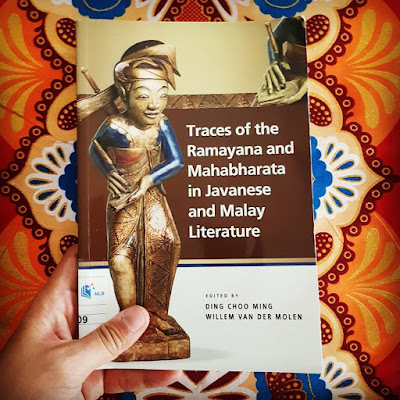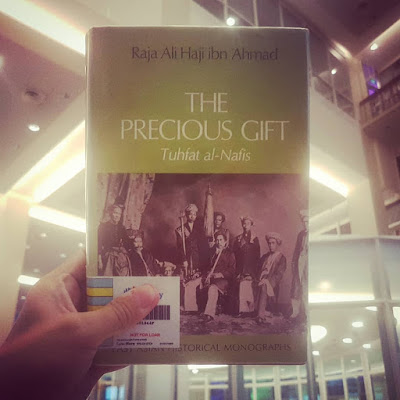A History of Classical Malay Literature, by Liaw Yock Fang
Finally finished this 500 page book which Annaliza Bakri recommended. It's less a guide to the subject than a condensed library: maybe a hundred summaries of epics and mythic histories and religious treatises and legal codes and botanic allegories of romance, which makes it ditficult to skim.
But now that I'm done, I daresay certain sections ought to be compulsory for anyone who wants to be an authority on Singapore Literature: instead of saying our foundations are the first few chapters of the Sulalatus Salatin/Sejarah Melayu, we need to know that there were dozens of parallel sagas about princes born as children of nagas or chosen by elephants, that it's perfectly normal to have tales of people dying and coming back to life and switching genders so they can fight in battles or become the King of Constantinople so as to win back their long lost husbands. Oh, and Nila Utama seems to be much more common as a name for women. Fairy women. God, the wealth of eccentricity here is just staggering.
Especially worth re-examining for me are:
1. Cerita Jenaka, or comic tales of foolish and unfortunate men, such as Pak Pandir and Si Luncai (I especially like the ending of the last one, which involves a princess stabbing him for daring to get married to her by killing off her father, after which she reigns in glory);
2. Cerita Perlipur Lara, or folk epics, e.g. the Hikayat Raja Ambong and the Hikayat Raja Budiman, consisting of stock stories of princes and princesses on grand adventures;
3. The Story of Sri Rama, a version of the Ramayana in which Rama and Sita bathe into a pool and turn into monkeys and give birth to Kera Kecil (Hanuman)... who becomes restored as a handsome prince at the end of the epic;
4. Variations of the Javanese Panji stories, including some that mention princess Candra Kirana taking refuge in Temasek (Hikayat Panji Kuda Semirang, also Hikaayat Misa Taman Jayeng Kusuma, in which the king of Temasek is mentioned) and one in which Semar paints her as an ugly woman (Hikayat Misa Taman Jayeng Kusuma);
5. Liaw's classifications of Literature Belonging to the Period of Transition from Hinduism to Islam, in which he notes Indic elements, e.g. astrologers, bidadaris, raksasas, sorcerers, peacocks, with Islamic elements such as syariah law, prayers, hakikat (reality) and makrifat (spiritual knowledge), e.g. Hikayat SI Miskin, Hikayat Indra Putra;
6. Remarkable variations on stories of the Islamic prophets, e.g. Nuh's animals turning into duplicates of his daughter for his workers to wed and people discovering that the animal poo on the site could heal their ailments;
7. 1,001 Nights-style framed narratives;
8. Historical Literature, e.g. Sejarah Melayu/Sulalatus Salatin, Tuhfat al Nafis.



Comments
Post a Comment